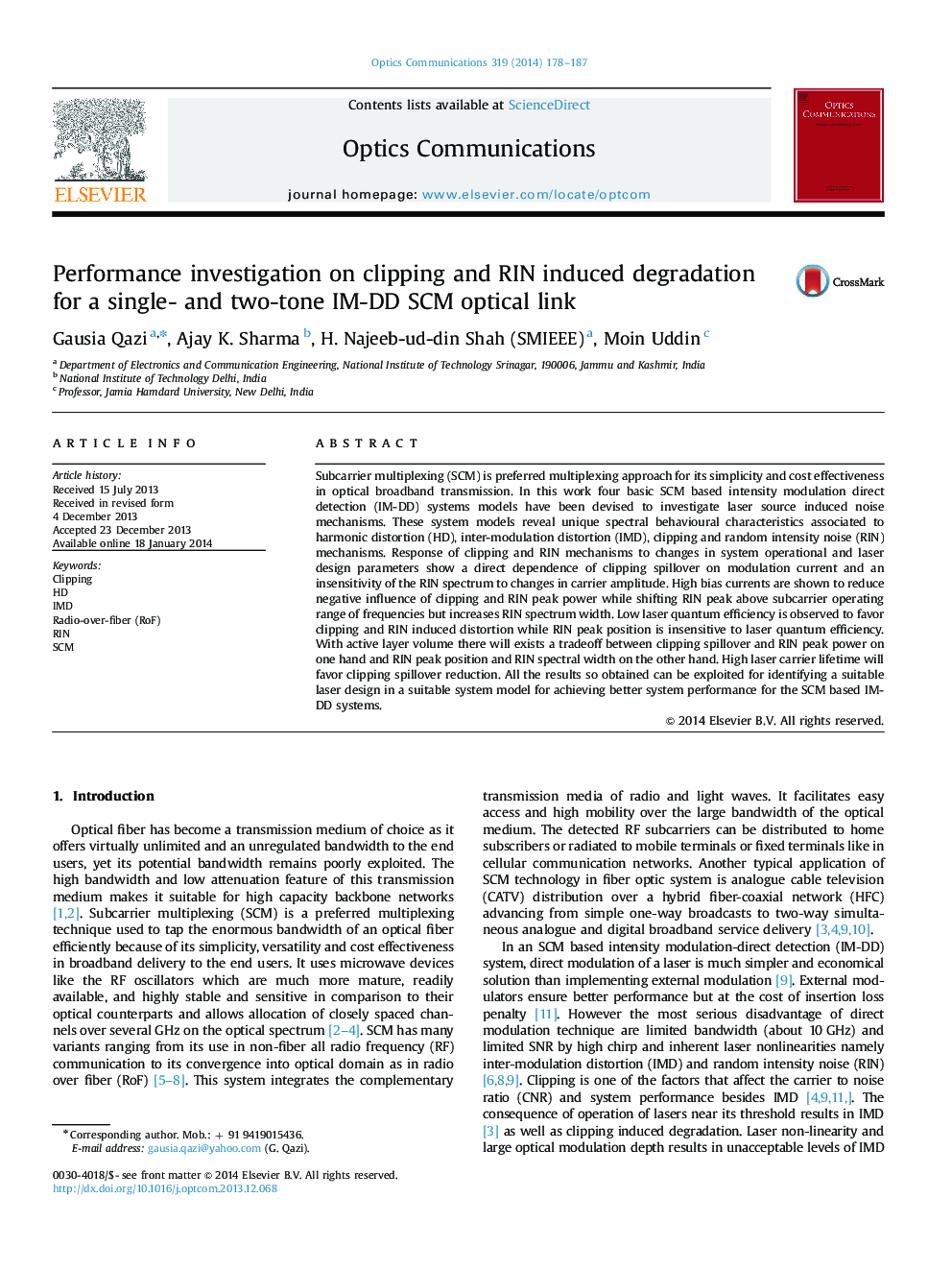| Article ID | Journal | Published Year | Pages | File Type |
|---|---|---|---|---|
| 7931289 | Optics Communications | 2014 | 10 Pages |
Abstract
Subcarrier multiplexing (SCM) is preferred multiplexing approach for its simplicity and cost effectiveness in optical broadband transmission. In this work four basic SCM based intensity modulation direct detection (IM-DD) systems models have been devised to investigate laser source induced noise mechanisms. These system models reveal unique spectral behavioural characteristics associated to harmonic distortion (HD), inter-modulation distortion (IMD), clipping and random intensity noise (RIN) mechanisms. Response of clipping and RIN mechanisms to changes in system operational and laser design parameters show a direct dependence of clipping spillover on modulation current and an insensitivity of the RIN spectrum to changes in carrier amplitude. High bias currents are shown to reduce negative influence of clipping and RIN peak power while shifting RIN peak above subcarrier operating range of frequencies but increases RIN spectrum width. Low laser quantum efficiency is observed to favor clipping and RIN induced distortion while RIN peak position is insensitive to laser quantum efficiency. With active layer volume there will exists a tradeoff between clipping spillover and RIN peak power on one hand and RIN peak position and RIN spectral width on the other hand. High laser carrier lifetime will favor clipping spillover reduction. All the results so obtained can be exploited for identifying a suitable laser design in a suitable system model for achieving better system performance for the SCM based IM-DD systems.
Related Topics
Physical Sciences and Engineering
Materials Science
Electronic, Optical and Magnetic Materials
Authors
Gausia Qazi, Ajay K. Sharma, H. Najeeb-ud-din Shah (SMIEEE), Moin Uddin,
